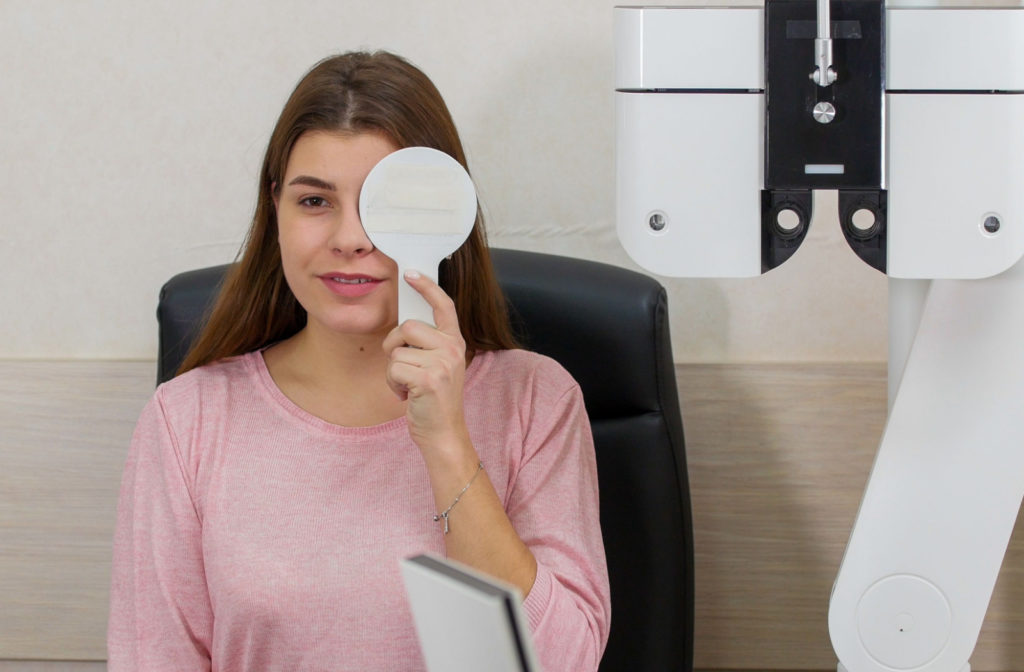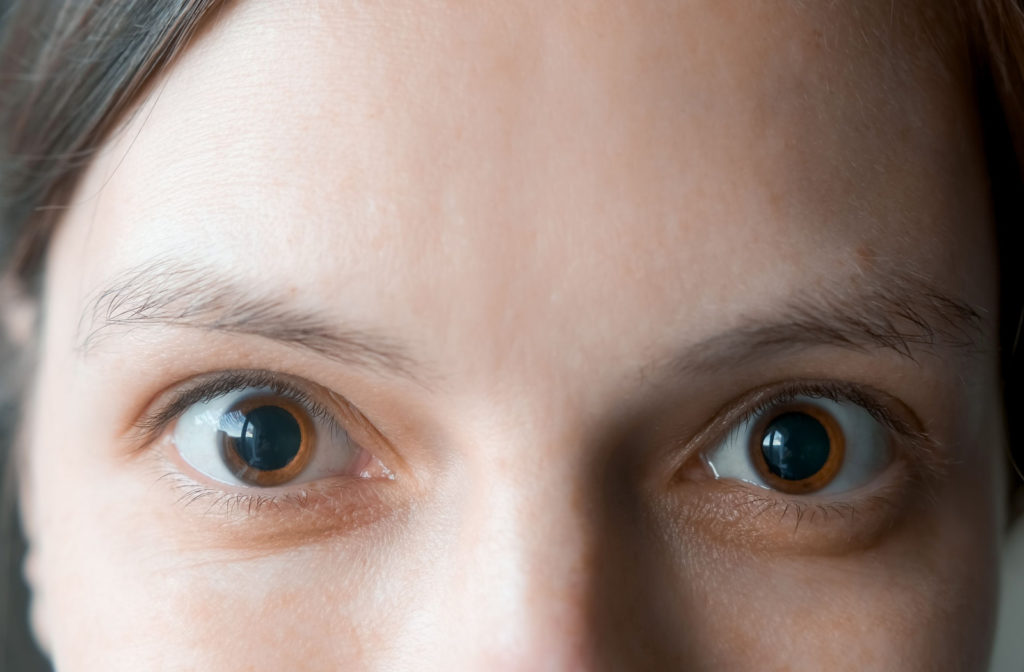If you’ve ever undergone an eye exam, you may recall when your optometrist used a special set of drops to dilate your pupils. Despite causing temporary blurred vision and light sensitivity, this procedure is crucial to a comprehensive eye check-up.
But why do optometrists dilate your pupils?
During an eye exam, your eye doctor dilates your pupils to allow more light into your eyes, providing a clear view of the internal structures and enabling early detection of potential eye conditions.
What Is Eye Dilation
Eye dilation is an essential procedure that grants your optometrist a peek into the inner workings of your eyes.
When dilating drops are applied, they cause the pupil, the dark central part of your eye, to expand, preventing it from contracting when exposed to light. This widened state of the pupil empowers your eye doctor to wield a magnifying lens and examine the intricate details within your eye, including the crucial area at the back.
Dilating Eye Drops & Their Side Effects
Mydriatics, also known as dilation eye drops, directly influence the iris muscles that alter the shape of the pupil.
While mydriatics may induce a temporary sensitivity to bright light, they seldom cause other side effects.
The effects of the drops gradually diminish after 4 to 8 hours, but in some cases, they can persist for up to 24 hours.
Is Eye Dilation Necessary?
Eye dilation might seem inconvenient, but it’s a critical component of a comprehensive eye exam. It provides your optometrist with an in-depth view of your eyes, making it especially crucial if you’re experiencing eye discomfort or vision issues or are at a higher risk for specific eye diseases.
During a dilated exam, your doctor can identify concerns such as a torn or detached retina or even an eye tumor. Moreover, they can diagnose and closely watch prevalent eye diseases that could compromise your vision.
What Optometrists See When They Dilate Your Eyes
Dilation provides optometrists with a panoramic view of the back of your eye. This expanded visibility includes the entirety of the retina, the specialized area known as the macula, and the optic nerve. This broad perspective enables them to conduct a thorough examination and spot any irregularities that may be present.
Conditions That Dilation Can Help Detect in Their Early Stages
Dilation plays a pivotal role in detecting several eye conditions in their early stages. These include:
- Glaucoma: This condition damages the optic nerve, often due to high pressure in the eye.
- Cataracts: A clouding of the eye’s lens that can blur vision.
- Diabetic Retinopathy: A condition where the retina’s blood vessels are damaged. The retina is the tissue at the back of the eye that is light-sensitive.
- Retinal Detachment: A serious condition where the retina pulls away from the tissue around it.
- Age-Related Macular Degeneration: An eye condition that occurs with aging and causes damage to your central vision.
What Happens During a Dilated Eye Exam
A dilated eye exam encompasses several tests to evaluate different aspects of your vision and eye health. Here’s what you can expect at your next visit to the eye doctor:
- Visual Acuity Test: This test assesses your ability to see clearly. Your doctor will ask you to read letters at different distances.
- Visual Field Test: This evaluates your peripheral vision. Your doctor will test your ability to perceive objects at the edges of your vision without moving your eyes.
- Eye Muscle Function Test: This checks for issues with the muscles surrounding your eyeballs. You’ll be asked to follow an object with your eyes as your doctor moves it around.
- Pupil Response Test: This examines how light enters your eyes. Using a small flashlight, your doctor can observe how your pupils react to light.
- Tonometry Test: This measures the pressure in your eyes. A machine will gently blow a quick puff of air onto your eye, or a special tool will touch your eye lightly.
- Dilation: This facilitates a thorough check for problems with the inner parts of your eye. Your doctor will administer eye drops to dilate (widen) your pupil, enabling them to see inside your eye.
Depending on your individual needs, your eye doctor may include additional tests.

How Often Should You Get a Dilated Eye Exam
Your risk for eye disease plays a significant role in determining how often you should get dilated eye exams. It’s important to discuss this with your doctor to establish a schedule that matches your personal needs. Consider the following guidelines:
- If you are over 60, a dilated eye exam is recommended every 1 to 2 years.
- If you are African American and over 40 years old, a dilated eye exam is recommended every 1 to 2 years.
- If you have a family history of glaucoma, consider getting a dilated eye exam every 1 to 2 years.
- If you are managing diabetes or high blood pressure, consult your doctor about the frequency of exams. Most individuals with these conditions should have a dilated eye exam at least annually.
Promoting Vision & Eye Health at San Clemente Optometry
At San Clemente Optometry, your vision and overall eye health take center stage. We’re dedicated to utilizing technology and the latest research to deliver excellent eye care services.
We can identify potential eye conditions early through pupil dilation during eye exams. It empowers you with the knowledge needed to make well-informed decisions about your eye care.
Schedule an appointment with us today and experience the difference of comprehensive, personalized eye care at San Clemente Optometry. Your vision is our priority.




